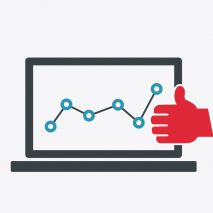Gartner’s recent Top Strategic Technology Trends for 2021 report and Forrester’s 2021 Predictions both highlighted edge computing as a key trend for the upcoming year. Here we’re taking a closer look at exactly what edge computing means for business in 2021, and how it will play out as part of the unfolding digital transformation.
Closer processing
Edge computing can be defined as a distributed cloud system in which computation and data storage is performed geographically close to the request location (at the edge), while the overall service is managed centrally. While edge computing has been around in various guises for a long time now, new business models, coupled with the pandemic-driven surge in cloud computing, and the additional scope offered by 5G, means it will move “from science project to real value” in 2021 (Forrester).
One of the key advantages of edge computing is that it combats latency. While you could presumably bear an extra couple of seconds to wait for your search results or email to load, applications like multiplayer games or voice assistants require near-instant reaction. These latency issues are primarily due to the lag from data moving halfway round the world to be processed, and then back again. Putting data processing within the users’ locality cuts out this lag, improves the user experience and ultimately opens the door for a new breadth of application.
A second benefit to this system is that it circumvents issues surrounding privacy. Some regions have laws protecting the movement of private data outside the region, a required action in the current cloud model. By sending data to be processed within the locality, providers can easily remain compliant.
The security tightrope
Edge computing does present fresh security challenges, as the centralised data becomes distributed. IoT devices tend to have poor levels of security, making them a low-hanging fruit for cyber criminals. Additionally, more devices simply means more entry points, so more fronts for attack and unscrupulous profiteering. The flipside however, is that distributed data leaves data centres holding less information and therefore less vulnerable. Additionally, in the event of an attack, the distributed system means that an arm of the network can be paralysed, isolating the outbreak to protect the rest.
For these reasons research giants Forrester and Gartner have both named edge computing one of their top tech predictions for 2021 (Gartner under the nom de plume of distributed cloud). Moving hand in hand with the rise in the cloud, AI, the IoT and 5G, this new model will reorganise the current cloud structure to make it more powerful, flexible and usable than before.
For many businesses speed is a key factor to besting competitors, meaning edge computing will quickly move from nice-to-have to absolute essential. In the financial trading industries, split-seconds can spell profit or loss, while for medical companies it can mean life or death. And for customer-facing or client-facing roles, swift response times translate to a better brand experience, and ultimately increased profits.

